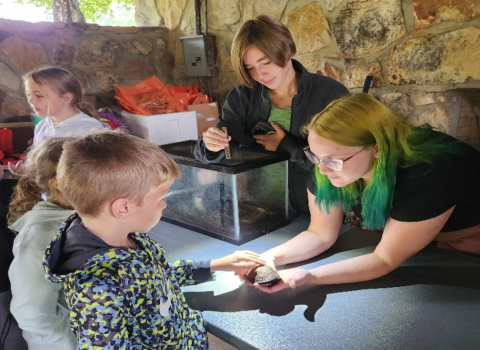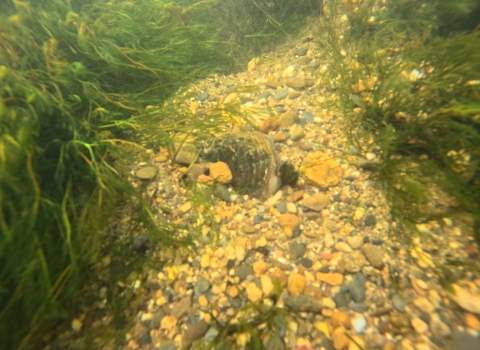Just a two-hour drive from the heart of New York City, in the forested hills of western Connecticut, the recent conservation of three parcels adds nearly 200 acres to local public recreation areas. These woods rest quietly, a safe harbor to the wildlife that live there, awaiting visitors to explore their beautiful trails, historical stone walls, rivers, hills and valleys.
The Connecticut Department of Energy and Environmental Protection, in partnership with the Steep Rock Association and others, is successfully conserving land in Washington, Connecticut, thanks in part to the U.S. Fish and Wildlife Service’s Highlands Conservation Act grant program. These open spaces expand existing preserves for outdoor recreation, while also protecting freshwater resources and areas for wildlife.
Each of the three parcels has its own ecological significance. But combined, they extend the protection of two important river valleys and conserve critical wildlife habitats.
“These acquisitions expand public access opportunities for the residents of this community, Connecticut and beyond. They create outdoor educational opportunities and further protect this important conservation area conservation area
A conservation area is a type of national wildlife refuge that consists primarily or entirely of conservation easements on private lands. These conservation easements support private landowner efforts to protect important habitat for fish and wildlife and major migration corridors while helping to keep agricultural lands in production.
Learn more about conservation area for local drinking water wells,” said Lindsay Suhr, director of the Land Acquisition and Management Office at Connecticut Department of Energy and Environmental Protection.
The parcels offer scenic, forested terrain for outdoor enthusiasts. One parcel also expands public access along the state designated Shepaug Greenway, a multi-use trail which follows the historical Shepaug Railroad bed along the river.
Protection of this land begins to connect the dots along Connecticut’s conservation journey. According to Brian Hagenbuch, executive director of Steep Rock Association, the long-term goal is to connect additional trail systems and open spaces together. Two important connections include establishing the Shepaug River Railroad corridor between the towns of Roxbury and Litchfield and connecting these trails to state parks and the Mattatuck Trail, a state-designated greenway. These acquisitions move these goals closer to reality.
“Together, these parcels provide a diverse array of recreational opportunities and offer regional connectivity to both wildlife and humans,” said Hagenbuch. “Additionally, the land offers substantial protection of water quality and serves as critical reservoirs that enhance climate resiliency and adaptation.”
The land is located within the Highlands region, an area that is vital to local cities and towns for the protection of freshwater resources, wildlife habitat and public recreation areas. This 3.4-million-acre region spans the Appalachian ridgeline, stretching from northwestern Connecticut, through New York and New Jersey, and into eastern Pennsylvania. Since 2004, the Service’s Highlands Conservation Act grant program has created funding opportunities to help conserve land parcels that may have otherwise been left open to development.
“The opportunity for local land trusts to apply for and acquire substantial state and federal funding for the purchase of such properties protects their conservation value, offers the general public access to a natural world, and helps define our community’s quality of life and rural character,” said Hagenbuch.
Suhr explains that Connecticut Department of Energy and Environmental Protection has ambitious plans for the future of conservation in the state. Working with local land trusts, they seek to improve the quality of life for state residents by expanding public access and protecting wildlife habitat through the Highlands and beyond. These properties will help bridge the gap in long-distance hiking trails and it will help connect protected land throughout the region.
“We are seeking to grow our conservation areas so that our children, and our children’s children, may have opportunities to explore the beauty of the landscape and benefit from the natural resources around them,” Suhr said.





